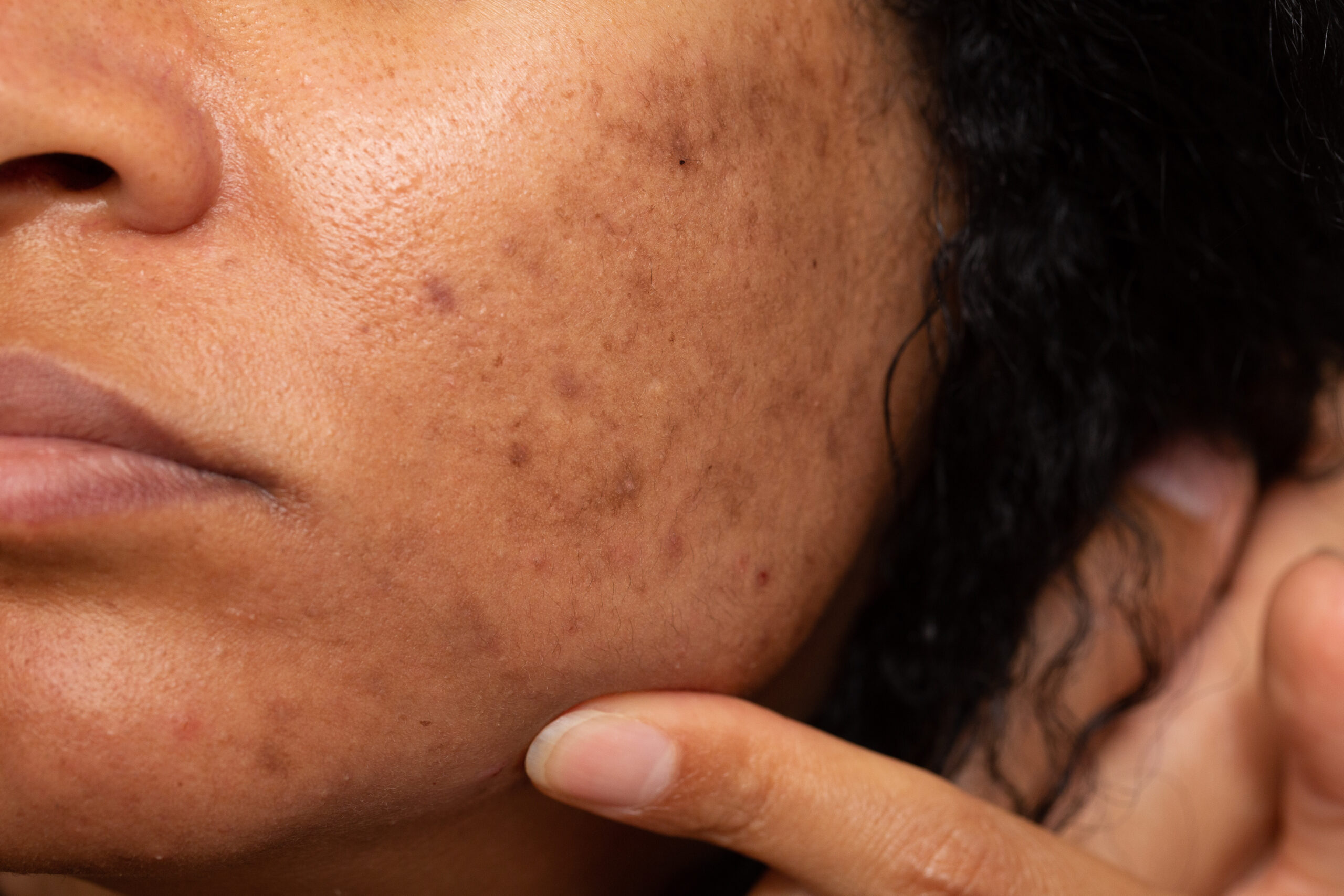[ad_1]
Think you know the common symptoms of an unhealthy gut? Healthista spoke to The Gut Experts – Professor Barbara Ryan and Elaine McGowan RD who reveal the indicators plus what can help
Gut conditions can cause many different symptoms, depending on the part of the digestive system that is being affected.
Symptoms are things that you experience and signs are changes that can be found on a physical examination.
It is better to think of symptoms as being indicators of a possible underlying digestive problem rather than being an indicator of an unhealthy gut as the term ‘unhealthy gut’ is not a scientific one.
It is better to think of symptoms as being indicators of a possible underlying digestive problem
When considering gut conditions, it is helpful to think of ‘the upper gastrointestinal tract’ (GIT) and the lower GIT.
The upper GIT includes the oesophagus, stomach and first part of the small bowel (the duodenum). It also includes the organs attached to this part of the gut, which are the gallbladder and pancreas.
Upper GI symptoms are usually related to either eating or not eating food (fasting). Sometimes the type of food eaten is important, but in some cases the very fact of having eaten something will bring on the symptoms.
Common Upper GI symptoms:
- Heartburn: A burning feeling behind the breastbone
- Belching (burping)
- Dyspepsia: An acid burning / pain feeling in the central upper abdomen
- Nausea: A sick feeling / feeling of wanting to vomit
- Anorexia: Loss of appetite (not anorexia nervosa)
- Postprandial pain: Pain after eating
- Postprandial fullness: Excessive feeling of fullness after eating
- Bloating in upper abdomen: A feeling of being distended
- Dysphagia / odynophagia (difficulty or pain on swallowing)

The lower GI tract is significantly longer than the upper GI tract and starting from the top down, it includes the small intestine and the large intestine (colon).
A feature of lower GI symptoms is that they tend to be related to passing a bowel motion. Very often they get worse before passing stools and are relieved afterwards, although some people might find that pain gets transiently worse after passing a bowel motion.
Common Lower GI Symptoms:
- Abdominal bloating: An uncomfortable full feeling, often accompanied by visible distension: “I look like I’m 6 months’ pregnant”
- Lower abdominal pain / cramps
- Excessive Flatus: Wind that’s expelled from the anus
- Constipation: Hard or infrequent bowel motions, or the need to strain excessively
- Diarrhoea: Very loose bowel motions, or increased frequency of bowel motions
- Nocturnal diarrhoea: Waking from sleep with diarrhoea
- Borborygmi: Loud gurgling or rumbling sounds coming from the gut
- Change in bowel pattern
- Change in appearance of the stools
- Blood or mucus in the stools
- Incontinence: Difficulty controlling the passage of stools causing leakage (accidents)
All these symptoms can have many causes, most of which are not serious.
If you experience any new digestive or gut symptoms it is important not to self-diagnose and to make an appointment to discuss them with your GP or family doctor to decide what, if any further investigations are required.
Read More: IBS or SIBO symptoms? How to tell these common gut issues apart

Dealing with constipation…
Fibre: Generally 20–35g of fibre per day is recommended. Fibre is found in plant-based foods, such as fruit, vegetables and wholegrain foods.
Some easy sources of fibre include:
- 2 kiwi fruits or 2 small oranges (clementines) per day
- Linseed and flaxseed – take one heaped teaspoon to two tablespoons – of whole or ground linseed or flaxseed. They can be added to porridge, cereals, yogurts, soups and salads. They need to be taken with plenty of fluid and it’s important to start with a small amount and gradually increase
- Psyllium husk, also known as Ispaghula, helps relieve constipation. It can be purchased as whole psyllium husks, psyllium husk powder or in capsules
Fluid: Drink 1.5–2.5L of fluid per day. Water is the best source, but herbal teas and decaffeinated tea and coffee can contribute to daily fluid intakes.
Caffeine: Strong tea, coffee and 80 to 90 per cent dark chocolate all contain caffeine and can act as a bowel stimulant to help keep you regular.
Sorbitol: Prunes and apricots contain sorbitol, a great natural laxative.

Dealing with diarrhoea and loose stools…
Caffeine: Reduce your caffeine intake (remember, caffeine is present in tea as well as coffee).
Fibre: Be fibre aware! Is your intake too high? If so, try reducing it to around 18 to 20g of fibre per day, then gradually increase levels if your symptoms improve.
Sweeteners: Avoid any sweeteners containing ‘ol’ at the end in particular xylitol, sorbitol and foods containing them. These are present in many low-fat foods.
Onions and garlic: Cut these out of your diet short-term to see if it helps lessen your symptoms.
Fruit (fructose): Reduce your intake of fruit to three small pieces per day.
Alcohol: Should be kept to a minimum.
If you are experiencing constipation or diarrhoea then you should see your GP or a Registered Dietitian.
What are the big no-no’s if you are struggling with your gut health?
1. Don’t self-diagnose. If you are experiencing new or ongoing gut symptoms it’s important you see your GP, do not turn to Dr Google.
2. Don’t start cutting foods out of your diet without having sought professional advice. If you suspect some foods may be causing some of your uncomfortable gut symptoms, keep a food diary and symptom tracker and bring this to your GP or a Registered Dietitian to discuss.
do not turn to Dr Google
3. Don’t do an IgG food intolerance test, these tests are not scientifically validated and are very expensive! They tell more about dietary intake than true food intolerances.
4. Don’t start taking a probiotic without doing your homework. There are so many probiotics available currently, and different strains do different things – search for evidence that a particular probiotic works.
The British Society of Gastroenterology advises that it is reasonable to trial a probiotic for up to 12 weeks to see if there is any effect. However, The American Gastroenterology Association does not recommend the use of probiotics for IBS or most other gut conditions.
Read More: Symptoms of depression? This probiotic is PROVEN to help

Repairing your microbiome after antibiotics
Most antibiotics have a broad spectrum of activity and thus have the ability to ‘kill’ many different types of bacteria, including those in the gut.
They will never wipe out the gut microbiota (GM) completely (there are over 50 trillion bacteria in the gut, mainly the colon), but they certainly can change the balance and mix of the GM while you are taking them.
Antibiotics disrupt the balance that normally exists between the various species of GM within the gut. This is associated with reduced GM diversity, but not necessarily reduced total numbers of bacteria within the gut, as some bacteria that are not susceptible to the particular antibiotic, will proliferate to take up the ‘free space’ within the gut.
Studies have shown that the GM tend to revert back to normal spontaneously over time. In children, this has been reported to take approximately four weeks, whereas in adults, it may take up to six weeks, although some of the baseline GM remained undetectable for up to six months, even after a short course of antibiotics, so some subtle changes may be more long-lasting.
For most people therefore, the only thing necessary for recovery of the GM is time.
Read More: Do I need antibiotics?
gut microbiota (GM) tend to revert back to normal spontaneously over time
Antibiotic-related changes in the GM can lead to ‘antibiotic-associated diarrhoea’ in some instances, and in more severe cases can lead to an overgrowth of a harmful bacteria called Clostridium Difficile, or C. Diff for short, or to an overgrowth of candida, which is a fungus that is found in the gut of up to 50 per cent of people.
The rationale for using probiotics along with antibiotics is to accelerate recovery of a disrupted GM and prevent potentially harmful bacteria (such as C. Diff) from being able to take-over the ‘spaces’ resulting from antibiotic use.
There are many studies looking at the effects of probiotics in different contexts. All probiotics are not the same and have potential benefit in some situations but not in others.
There is some evidence that two probiotics, Lactobacillus Rhamnosus GG and Saccharomyces boulardii, may reduce the risk of antibiotic-associated diarrhoea in children, and that it is reasonable to use them in this context.
In adults, the study results are conflicting, and some recent studies have shown that probiotics may alter the recovery path of GM after antibiotic use when compared to no intervention9.
If you wish to take a probiotic while taking an antibiotic, to prevent diarrhoea, it is not unreasonable, but probably not necessary for most people, and is associated with increased cost.
Diet plays a major role in promoting a healthy mix of bacteria in the GM, and a diet rich in fibre, plant-based foods and low in saturated fats is beneficial to the GM at all times.

Professor Barbara Ryan and Elaine McGowan RD are The Gut Experts and authors of What Every Woman Needs to Know About Her Gut, published by Sheldon Press, £16.99
Follow The Gut Experts on Instagram @thegutexperts
[ad_2]
Source link






